|
Mills in the Monts du Forez
Ruth Andrews
Photos by Keith and Ruth Andrews
|
|
We have just returned
from 2˝ weeks in the south of France. Our first gîte
was in the little known district of Forez, with a
wonderful panoramic view across the upper Loire
valley: “on a clear day you can see Mont Blanc”,
although we never did due to the heat haze.
|
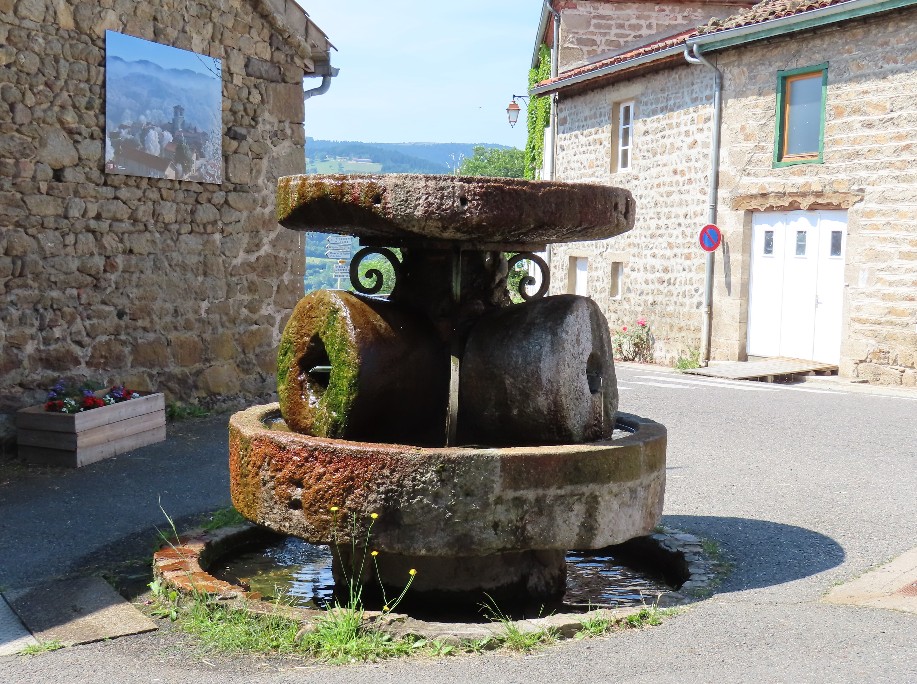 |
 |
|
In the village of Sauvain, a few miles from the gîte,
we were interested to see this
Fontaine des 5 Meules.
It is madeup of 5 large millstones, 2 for milling,
and 3 for crushing, which was built by the villagers
in 1968. The meules (millstones) came from abandoned
former mills in the locality. The same village also
had an unusual iron waterwheel on display outside
the museum (closed even though it was Sunday!). Just
outside the village was this cross mounted on 2
millstones. |
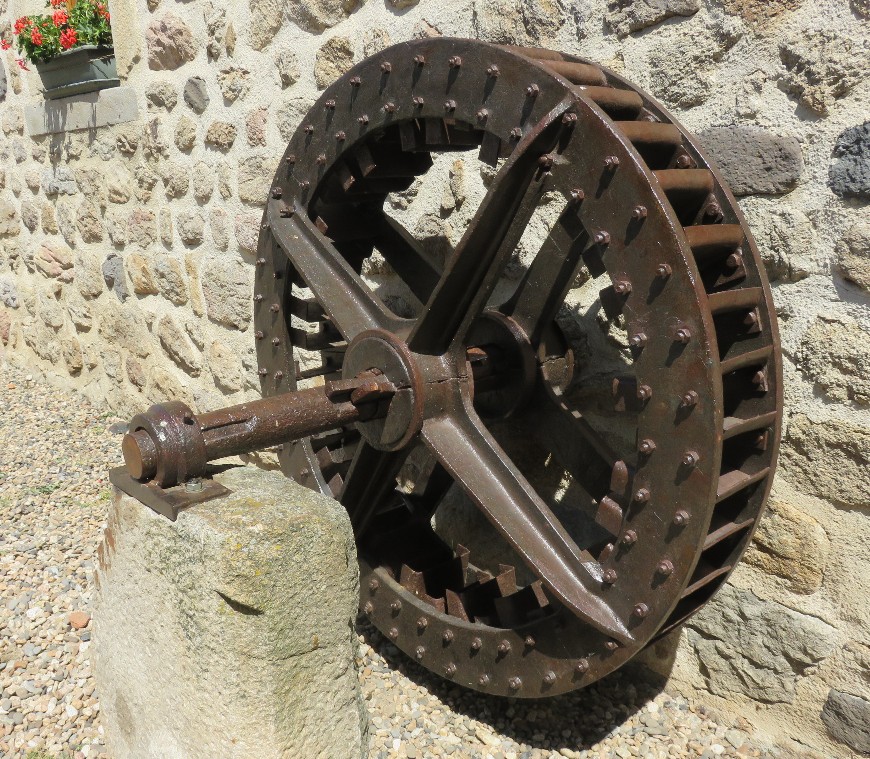 |
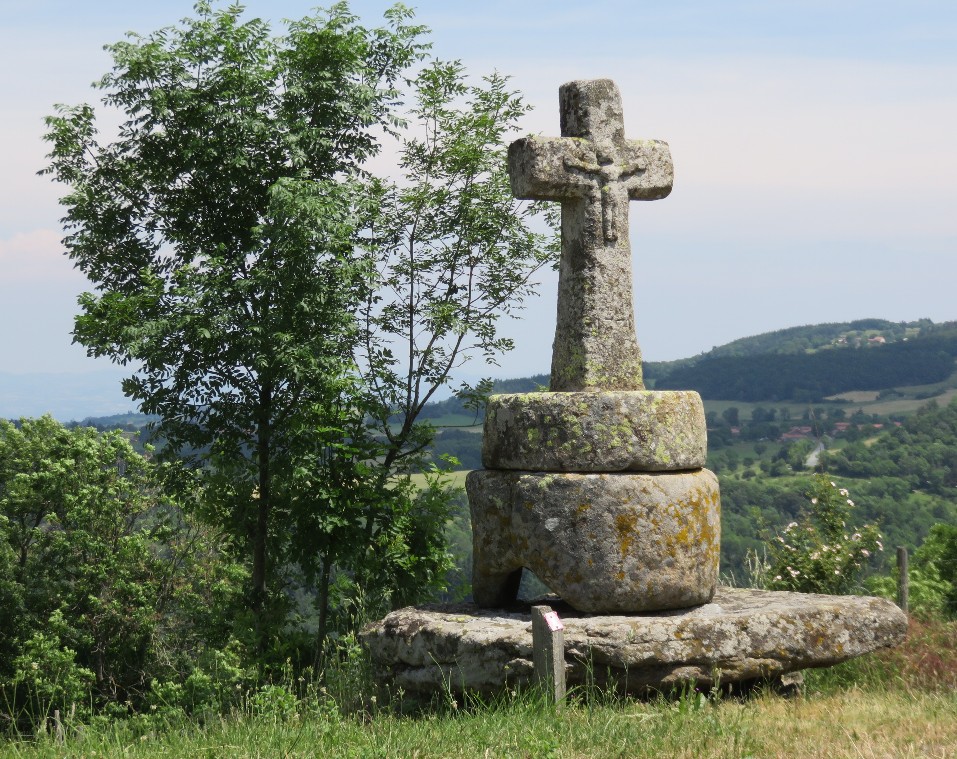 |
|
Moulin des Massons
is very heavily advertised locally so we went there
expecting something that was very commercialised.
We dutifully joined a conducted tour – in French, of
course: overlong at 2 hours as is the French way,
but thankfully there was an leaflet in English as
well. Anyway, we were rewarded with a really
interesting visit.
|
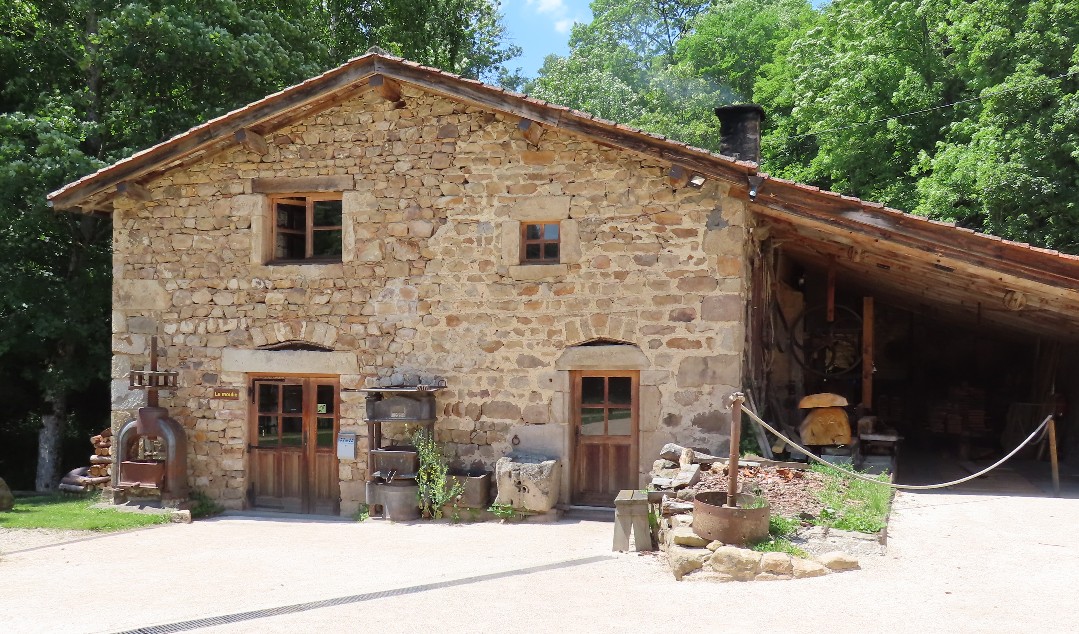 |

This mill is the last of almost 70 that were on the
Vizezy river, and the site dates from about the 12th
century, although the present mill building has been
rebuilt several times due to flood damage. It has
been used for flour milling, clover crushing, hemp
processing, generating electricity, and as a
sawmill, but now it demonstrates oil production.
We were
treated to a demonstration of its production, which
was unfortunately not a slick performance.
|
The mill itself is one of a cluster of buildings
which also include a farmhouse and sawmill. Various
objects scattered about the grass outside included a
clover mill, several disassembled turbines, and a
Pelton wheel.
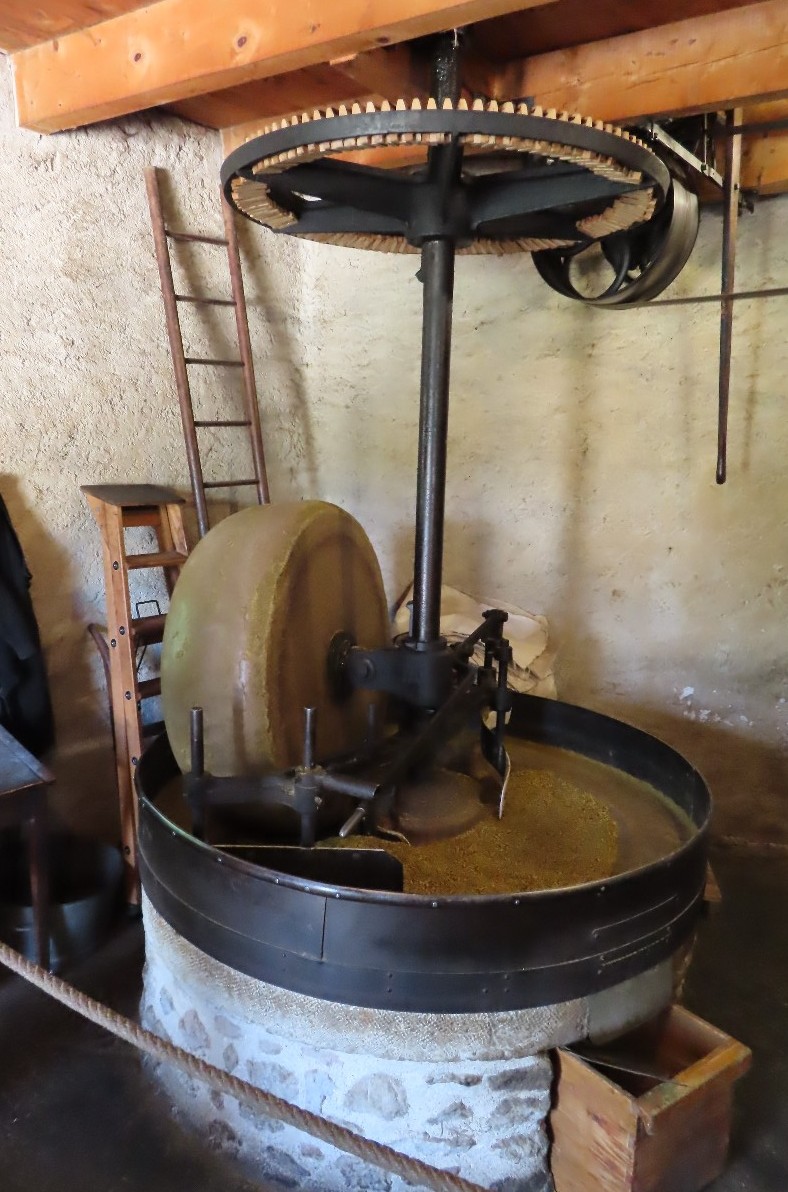 |
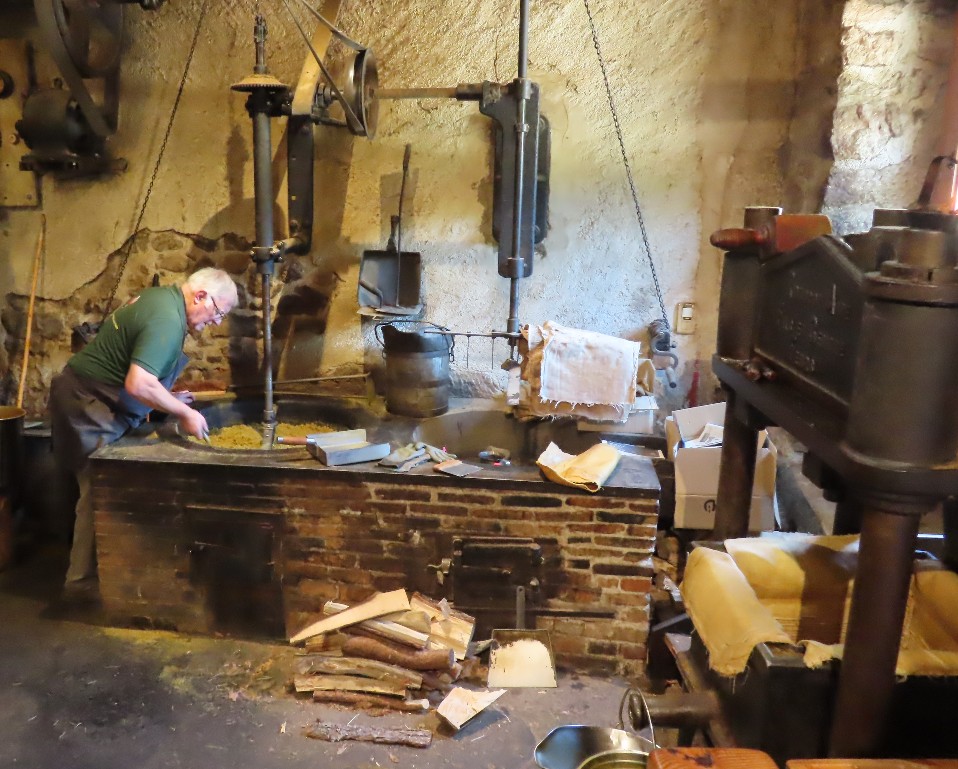 |
First the seeds are crushed between a small pair of
metal rollers, which jammed at first because the
‘miller’ put too much in. Then they are transferred
to a large stone crushing mill with sweeps (above
right).
When ready, they are carried across to a large
frying pan over a pinewood fire (left).
The crushed seeds have to be continually stirred by
hand and by sweeps to prevent them burning.
Once judged
to be cooked they are scooped out into a cloth-lined
oil press packed tightly and squeezed to release the
oil into a bucket. (At first, the miller put the
cloth lining in wrongly.) Power for the oil press
came from a hydraulic piston some way away behind
the viewing gallery where it sprayed lubricant onto
the spectators. The rest of the processes were
belt-driven from a horizontal wheel (a turbine?)
below floor level, viewable in a mirror.
|
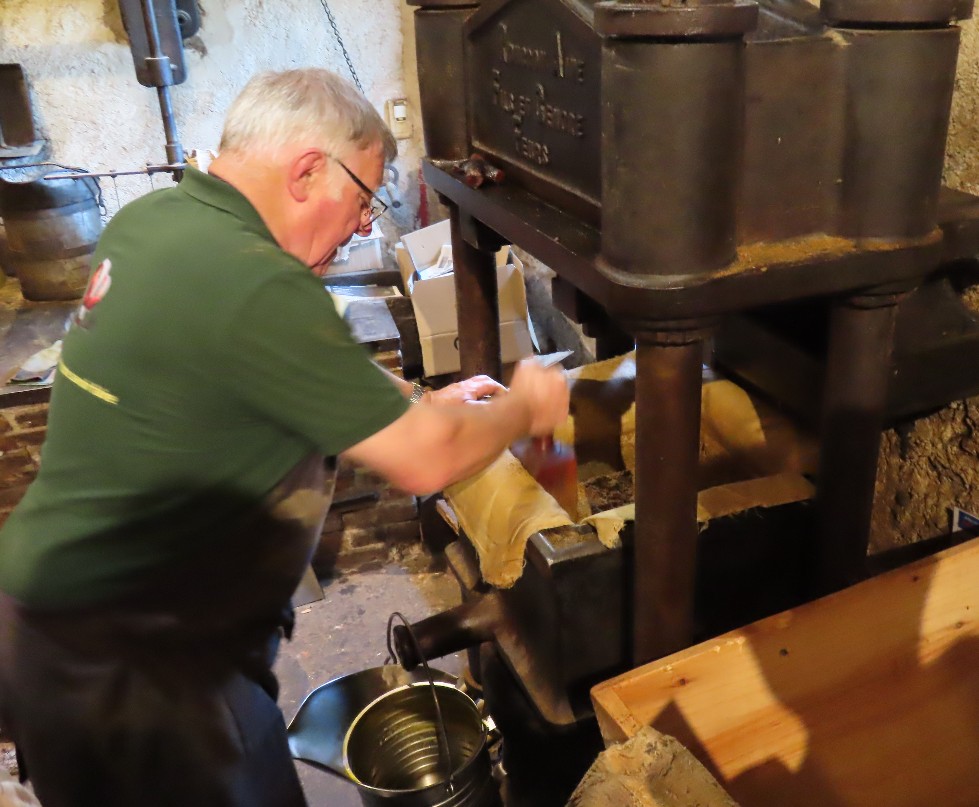 |
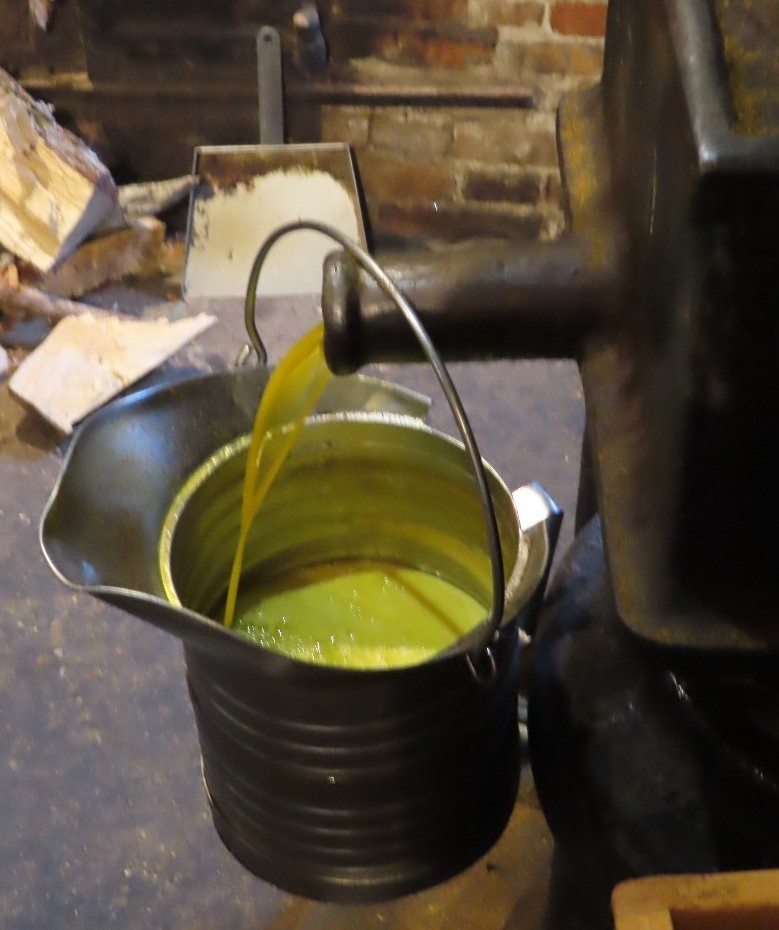 |
|
The oil is
purified (elutriated: look it up!) before bottling.
Keith staged a tactical retreat at this point but I
dutifully sampled teaspoonfuls of noix (walnut),
noisette (hazelnut), and colza (canola) oil, all of
which are made on site. I then left rapidly to gulp
tap water and suck a Werthers to get rid of the
taste! Needless to say, we didn’t buy any. |
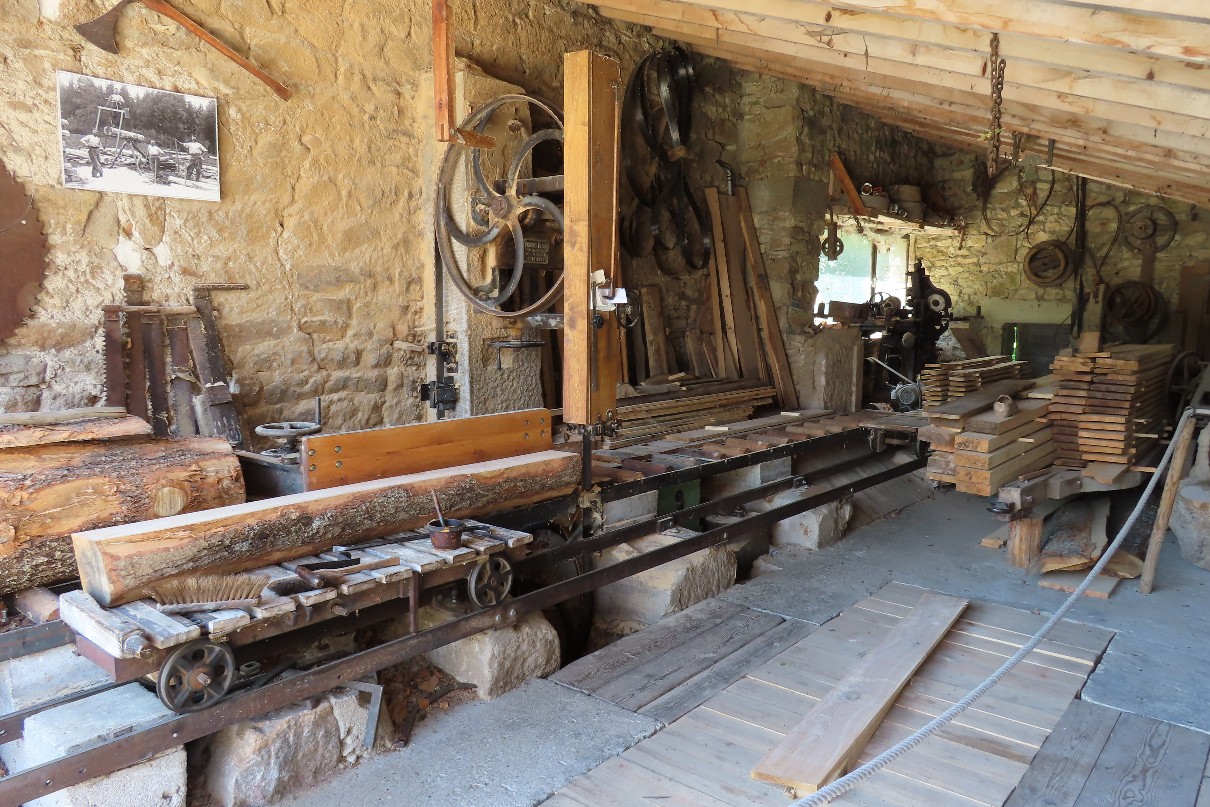
The same
‘miller’ also gave us a demonstration of the sawmill
which operates alongside the oil mill. The band saw
in use was completely unguarded and sprayed sawdust
over the audience, while the miller didn’t use
goggles, or gloves, or any other protection. |
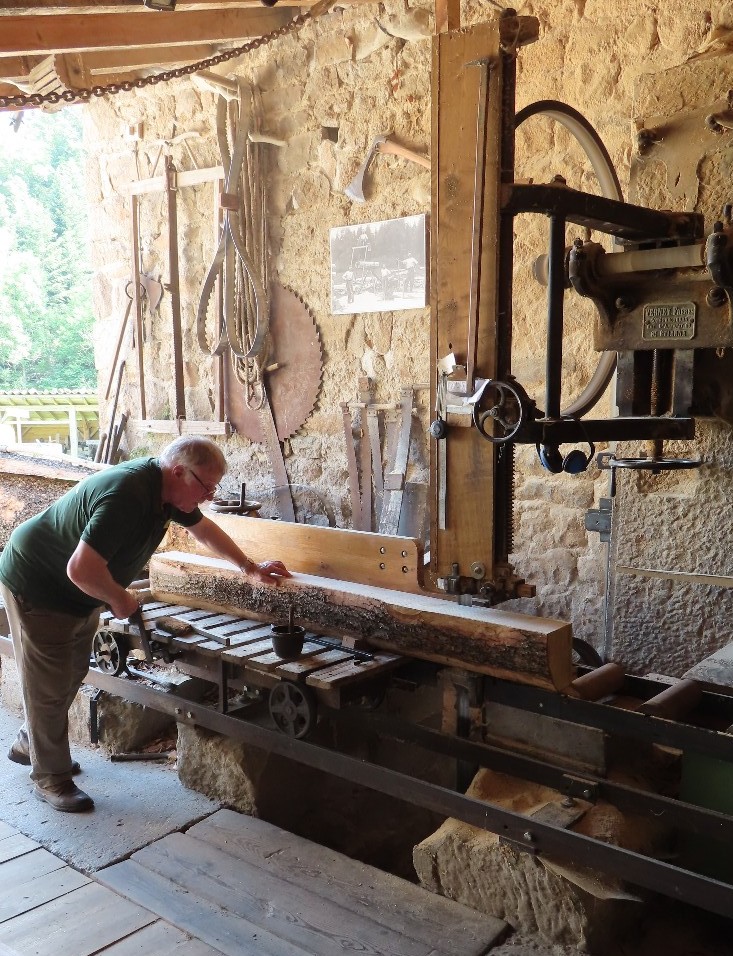 |
|
The oil is
purified (elutriated: look it up!) before bottling.
Keith staged a tactical retreat at this point but I
dutifully sampled teaspoonfuls of noix (walnut),
noisette (hazelnut), and colza (canola) oil, all of
which are made on site. I then left rapidly to gulp
tap water and suck a Werthers to get rid of the
taste! Needless to say, we didn’t buy any.
We visited
Le Moulin de Vignal
at Apinac
several days later. We knew it was not a day when it
was open, but we struck lucky because a large party
of primary school children were lining up to go
inside. A second set were picnicking in the grounds
and I think a third set were expected later. The
second set had made their own bread hedgehogs and
were all very enthusiastic. The other set were
sitting attentively through a long explanation of
the mill’s workings and products: flour until 1940,
canola until 1960, and then animal feed and clover
seed. We were given a guide sheet in English and
invited to look around on our own.
The mill was named after the family who have lived
in the area since 1650. The main buildings were
constructed in 1773 and 1860. When the last miller
died in 1991 a group of villagers decided to rent
the mill from the family in order to repair the
buildings and mechanism, and then open it to
visitors.
|
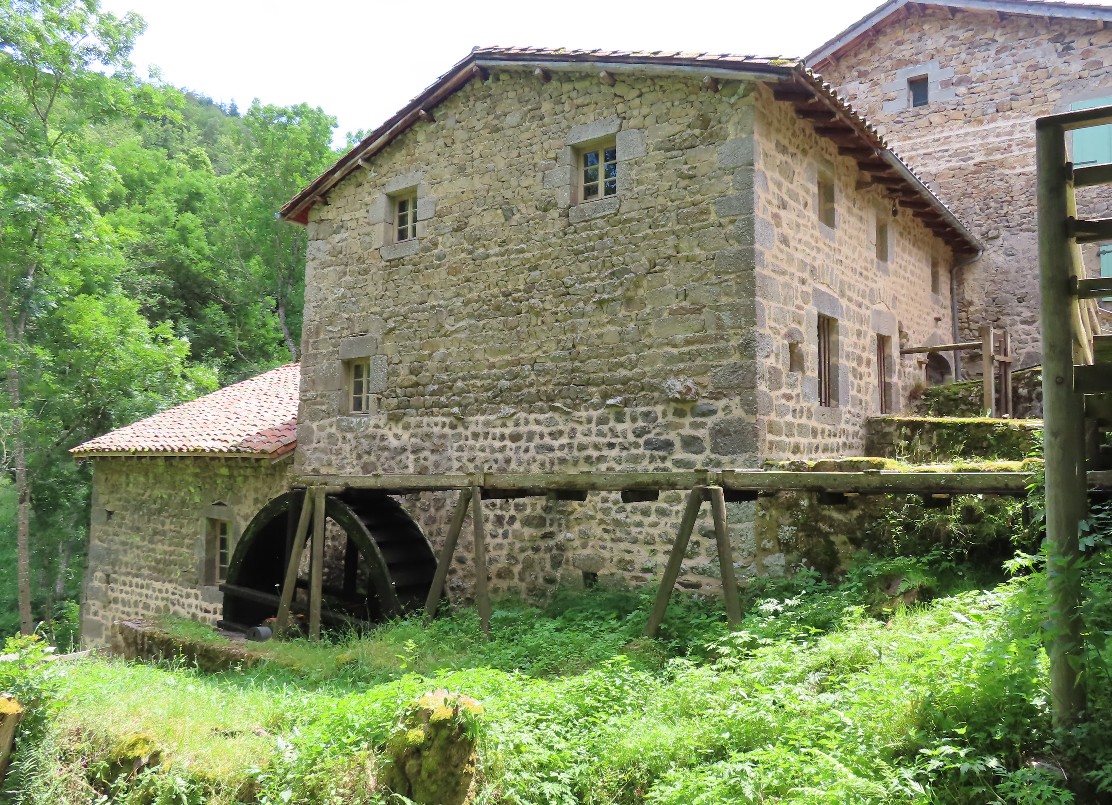 |
|
The mill has always relied on water power, with two
working horizontal wheels inside (one wood, one
metal) and a vertical overshot wheel on an outside
wall. There are 4 sluice gates in the mill head
which control the water supply from a dam some way
upstream.
The overshot
vertical wheel drives a pair of stones used for
milling flour. The metal horizontal wheel (below
left) powers the meal mill for animal feed, while
the oil mill uses belts and pulleys to connect it to
the wooden horizontal wheel (below right).
|
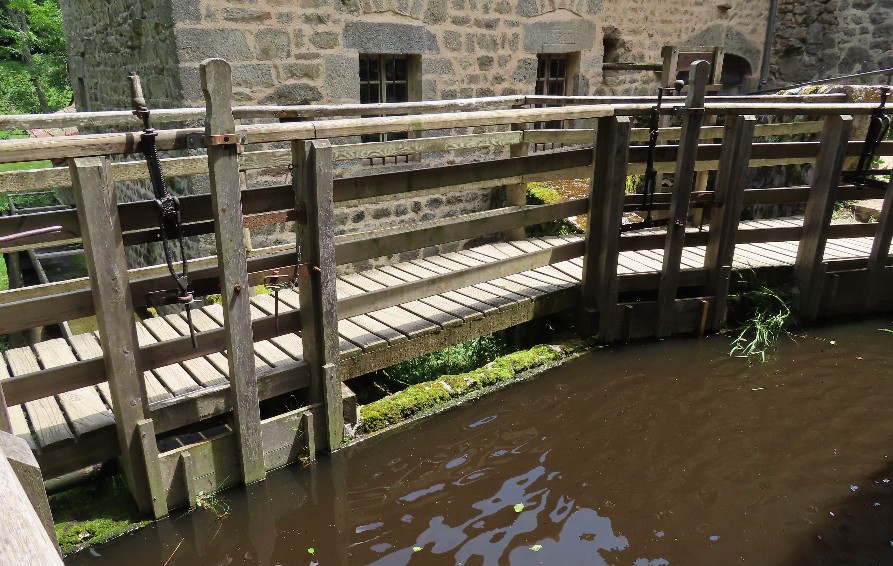 |
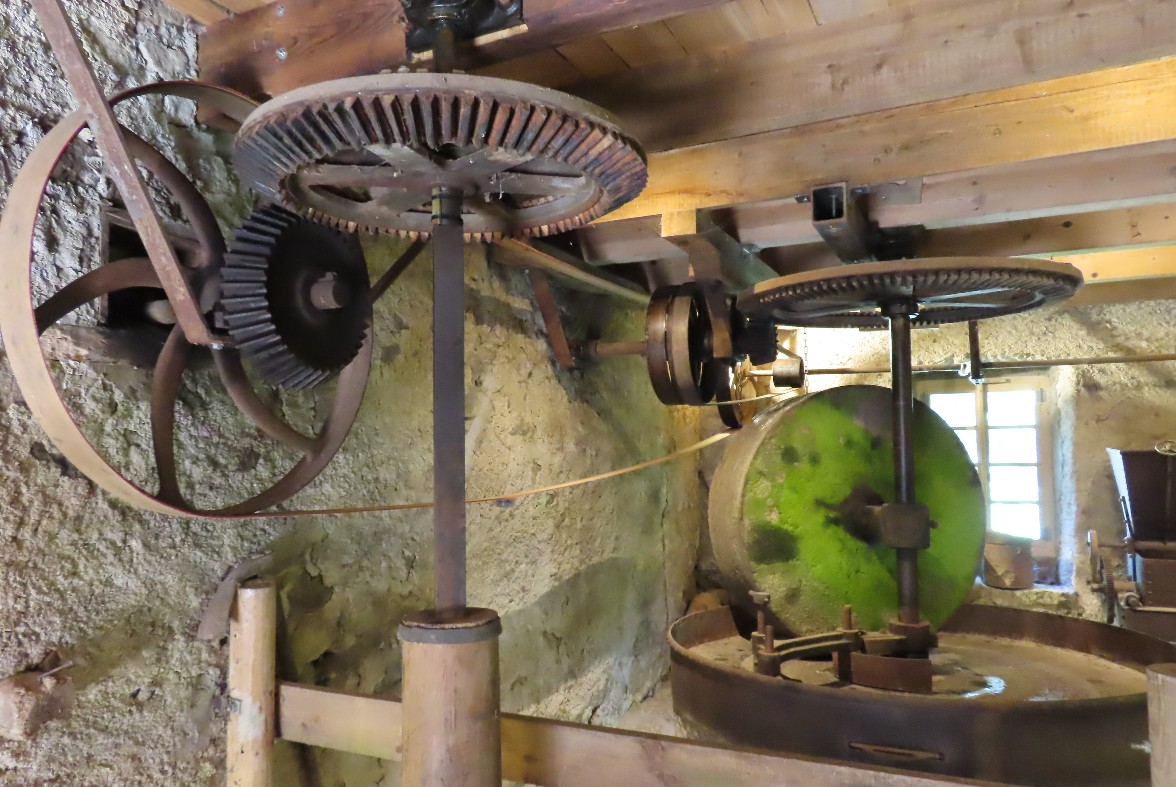 |
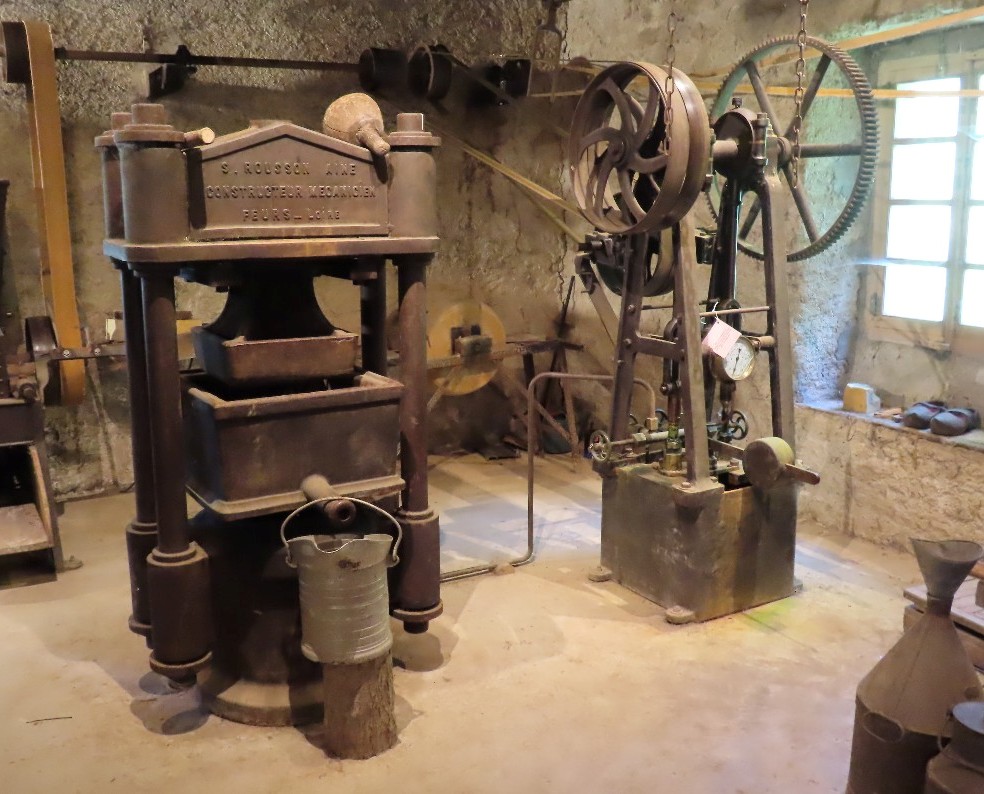 |
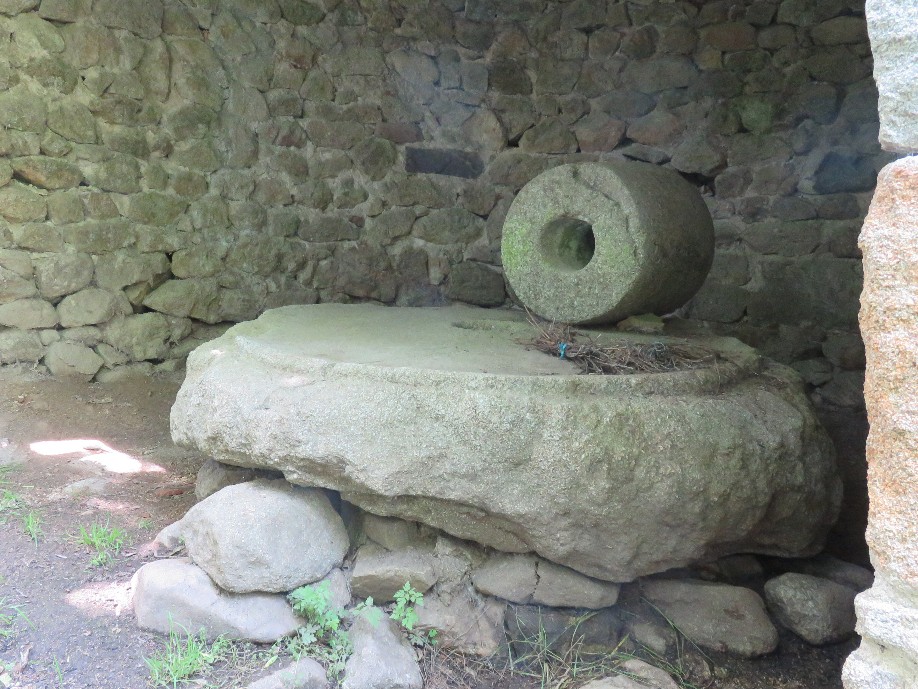 |
A separate open-fronted stone building further down
the slope contains a circular trough and crushing
stone for breaking clover pods. The seeds are used
as animal feed but also planted: clover is a legume
which has root nodules containing nitrogen-fixing
bacteria, which add nitrates to the soil and are
therefore natural fertilisers. The crushing process
generates a lot of dust which is why the mill is
situated in an open building.
See also
https://moulindesmassons.com/
and https://www.moulindevignal.fr/
|
| |
